Posted by Elena del Valle on April 30, 2012
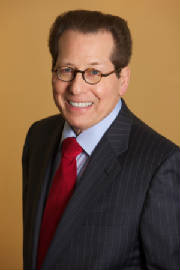
Ron Volper, Ph.D., author, Up Your Sales in a Down Market
Photo: Career Press
A podcast interview with Ron Volper, Ph.D.is available in the Podcast Section of Hispanic Marketing & Public Relations, HispanicMPR.com. During the podcast, Ron discusses compensation tactics to help retain employees with Elena del Valle, host of the HispanicMPR.com podcast.
Ron is a leading authority on business development and the author of Up Your Sales in a Down Market: 20 Strategies from Top Performing Salespeople to Win Over Cautious Customers (see Consultant outlines post recession sales strategies)
To listen to the interview, scroll down until you see “Podcast” on the right hand side, then select “HMPR Ron Volper, Ph.D.” click on the play button below or download the MP3 file to your iPod or MP3 player to listen on the go, in your car or at home. To download it, click on the arrow of the recording you wish to copy and save it to disk. The podcast will remain listed in the April 2012 section of the podcast archive.
Posted by Elena del Valle on April 27, 2012

Government Control of News book cover
Photos: News & Experts
Many people think there is complete freedom of expression for media in the United States. A former executive at the NBC legal department is concerned about what he describes as a “looming threat to free speech in the United States.
Corydon B. Dunham, who was NBC-TV’s legal counsel for 25 years, believes the proposed new Localism, Balance and Diversity Doctrine could eventually also affect news on the internet. According to him, the Federal Communications Commission (FCC) is reportedly planning to transfer the broadcast spectrum used by local television to the Internet hoping to convert it into our country’s main communications platform, and the agency has started to regulate the internet.
In his 282-page softcover book, Government Control of News: A Constitutional Challenge (iUniverse, $21.95), Dunham discusses the evolution of government control of television news and the Fairness Doctrine. The book, published in 2011 and the result of a study initiated at the Woodrow Wilson International Center for Scholars at the Smithsonian Institute, examines the history of the Fairness Doctrine, the rules by which the federal government regulated TV journalism. Similar rules had governed radio news since 1934 and were applied to TV in 1949 by the Federal Communications Commission.
“TV was a powerful new medium and there were only a few broadcast stations in many communities. It was thought that this gave unusual power to station and network owners,” Dunham explains. “The government justified the Fairness Doctrine as a way to ensure stations aired opposing viewpoints on issues.”
He explains in the book that in 1987, the FCC unanimously revoked the Fairness Doctrine, with court approval, after determining the doctrine had deterred news reporting on controversial issues, and had been used on multiple occasions to suppress viewpoints and help officials pursue their own political objectives. It took Congress two decades but it seems legislators are ready to revive the Fairness Doctrine in the form of the Localism, Balance and Diversity Doctrine, proposed in 2008.
“It has many of the same characteristics of the old Fairness Doctrine and can be expected to have similar results,” said Dunham. “News broadcast by television stations would have to meet government criteria for ‘localism’ – local news production and coverage – as well as a regulatory balance and diversity of viewpoints. A three-vote majority of five FCC commissioners at a central government agency would make local news judgments and override those of thousands of independent, local TV reporters and editors.”
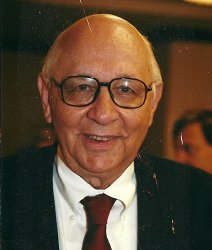
Corydon Dunham, author, Government Control of News
A local board at each station would monitor programming, including news, and recommend against license renewal if the station did not comply with FCC policy; in 2011, the FCC-sponsored Future of Media Study recommended the localism doctrine proceeding be ended; and the present chief of the White House regulatory office recommended that the government regulate news to advance its political and social objectives, according to Dunham.
“The president, Congress and the FCC have also agreed to transfer the entire broadcast spectrum (currently used by TV stations) to the Internet over the next 10 years. If the localism doctrine is adopted, it could apply to the Internet and its participants as users of the FCC-controlled spectrum.”
Dunham is convinced that requiring journalists to comply with a central government agency’s policy on how to report the news will impede those journalists from being free and independent.
“As the Fairness Doctrine broadcast history shows, the threat of loss of license will deter station news coverage, particularly of controversy, and the public will lose news and information. If the broadcast press is not free and independent of government, it cannot act as a watchdog for the public, which is its constitutional role.”
The book is divided into seven chapters: Television Journalism Begins, Regulation of Television News Content Upheld by the Supreme Court, How FCC Regulations Suppressed News and Speech, Congressional Investigations and Censorship, Executive Branch Censorship, The FCC Revokes the Fairness Doctrine, and New Government Threats; and four appendices.

Click to buy Government Control of News
Comments:
Filed Under: Books
Posted by Elena del Valle on April 25, 2012

Many survey respondents said they examine the Nutrition Facts Panel in products when shopping
Photo: HispanicMPR
Any restaurant or company selling food or meals today must be aware of American’s changing tastes and opinions about healthy choices in order to adjust selections on offer and promotions.
Salt seems to be on consumers radar lately. More than half of consumers (52 percent) who responded to a Mintel survey indicated they were watching their diet. While 60 percent said they were doing so to loose weight 15 percent said they had concerns about “salt intake.”
While more than half, 51 percent, said they always or usually monitor fat content, 47 percent of respondent said they look at sugar levels, and 49 percent said they always or usually examine calorie counts when shopping; about 44 percent of respondents said they look at the Nutrition Facts Panel (NFP), and may also examine the ingredient list with special attention to salt levels before making a food purchase.
“The relatively high incidence of dieting in the US is one key factor driving demand for low-sodium products,” said Molly Maier, senior health and wellness analyst, Mintel. “Our findings indicate that fat and calorie counts are more likely than sodium to influence purchase. Thus, companies may be able to maximize the appeal of low-sodium foods by also showing, where appropriate, that they are low in fat and calories.”
Many respondents to the Mintel survey (62 percent) said they believe food makers are responsible for disclosing how much sodium is in their products, while only 35 percent said they thought the government is responsible for disclosing such information. Surprisingly, 18 percent said they thought such disclosures are the responsibility of retailers.
Although consumers seem to want to know what is in the food they buy those who responded to the survey didn’t seem to want someone else to decide what they should eat. Only 46 percent of respondents said manufacturers should adopt sodium restrictions, and fewer still, 34 percent, said the government should do so.
Instead, they said they were limiting their salt intake at home. More than half, 59 percent, of the survey takers said they always or usually limit salt consumption at home, and 44 percent said they always or usually do so when dining at a restaurant.
More women (80 percent) than men (67 percent) who took the survey said they limit the amount of salt they cook with at home. Mintel researchers concluded that retail promotional materials should often be directed at women.
Older adults who participated in the survey expressed more concern for sodium levels in the foods they eat: 33 percent of respondents 65 and older said they watch salt levels compared to 32 percent for respondents aged 55 to 64 and 22 percent of all respondents.
Posted by Elena del Valle on April 23, 2012
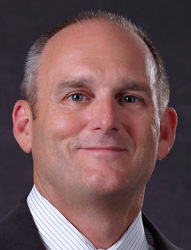
J. Clint Anderson, Ph.D., founder and president, J. Clint Anderson Company
Photo: J. Clint Anderson Company
A podcast interview with J. Clint Anderson, Ph.D., founder and president, J. Clint Anderson Company is available in the Podcast Section of Hispanic Marketing & Public Relations, HispanicMPR.com. During the podcast, Clint discusses ways to create positive team culture with Elena del Valle, host of the HispanicMPR.com podcast.
Clint has worked as a trainer, coach, and consultant with government, non-profit, and for-profit organizations. He developed and owns the Trimergent Leadership System which includes Leading Self, Leading Teams, and Leading Organizations. This leadership development process is based on a synthesis of organizational theories, different than traditional scientific management programs and which he believes yield superior results.
To listen to the interview, scroll down until you see “Podcast” on the right hand side, then select “HMPR J. Clint Anderson, Ph.D.” click on the play button below or download the MP3 file to your iPod or MP3 player to listen on the go, in your car or at home. To download it, click on the arrow of the recording you wish to copy and save it to disk. The podcast will remain listed in the April 2012 section of the podcast archive.
Posted by Elena del Valle on April 20, 2012
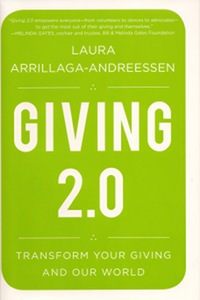
Giving 2.0 book cover
Giving can be challenging I discovered last year when searching for a home for a small grant. Potential recipients often balked when asked to share basic information about their organization’s mission and leadership. Those who were willing to respond to initial vetting queries required one year or longer before they were able to apply the monies and others still wanted to receive funding with no strings or almost no strings or reporting requirements attached. What is an individual wishing to donate to a good cause while ensuring the monies reach a responsible recipient matching the giving goals to do?
Laura Arrillaga-Andreessen, author, Giving 2.0: Transform Your Giving and Our World (Wiley’s Jossey-Bass, $25.95) offers some answers in her book. As a young adult she was inspired to devote much of her time to philanthropy by her parents. Although she felt “frustrated and isolated” following the death of her mother at the beginning of her journey of giving she pressed forward to a solution by creating an organization to assist individual donors.
Eventually her efforts led her to write the book published October 2011. Her main goal in writing the book was to assist readers who already had decided to give on how to do so effectively. She defines giving as a donation of any amount of money, skills, networks, expertise or time. Anyone who gives anything is a philanthropist, she says in the book.
In the book, Arrillaga-Andreessen refers to a website related to the book in which she promises additional information about the issues she discusses in Giving 2.0 and updates on the topic. She identifies the sections of the book for which she has information on the website with a “Giving 2.0” icon. According to the information in the book, the author plans to donate all the royalties resulting from the sale of the book to philanthropic organizations.
The 312-page hardcover book is divided into nine chapters: Giving Yourself, Connecting the Drops, Charting A Course, Determining A Destination, Game Changers, Something Ventured, Changing Minds, Family Matters, and In the Trenches; and four appendices.
Arrillaga-Andreessen, president, Marc and Laura Andreessen Foundation is a director of the Arrillaga Foundation and a board member of Sand Hill Foundation, Stanford University School of Education, SIEPR (Stanford Institute for Economic Policy Research), Women’s Health at Stanford Medical Center, and an Advisory Council Member of the Global Philanthropy Forum, according to her biography. She is also a contributing author of Local Mission, Global Vision – Community Foundations in the 21st Century.

Click to buy Giving 2.0
Comments:
Filed Under: Books
Posted by Elena del Valle on April 18, 2012
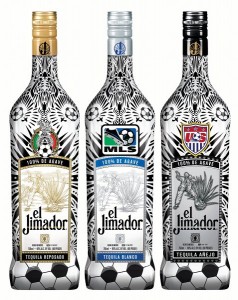
El Jimador tequila bottles – click to enlarge
Photos: El Jimador
El Jimador, a premium Mexican tequila brand, announced it hired Alexi Lalas, a former United States soccer player, to strengthen brand awareness by making special appearances and supporting the brand’s social responsibility initiative this year.
“Alexi brings more than just soccer knowledge to the table. He exhibits real passion, something that we value in our tequila production as well,” said said Jesus Ostos, tequilas brand marketing group manager. “Additionally, we wanted to work with someone who could promote our corporate social responsibility initiative and Alexi’s background affords us a level of credibility, while simultaneously increasing awareness of our presence in the sport.”
El Jimador is available in three varieties: Blanco (white), a clear tequila that is bottled after distillation. It is said to have “subtle cooked agave taste and hints of citrusy sweetness” that make it a good choice for tequila cocktails; Reposado (rested) adopts a “golden color” after sitting in white oak barrels for two months. It is said to have “hints of vanilla and caramel, a smooth and mellow taste;” and Añejo (aged), made from 100 percent tequilana weber blue agave and aged 12 months in toasted white oak barrels. It is said to have flavors of “vanilla and oak, balanced with subtle cues of cinnamon and caramel.” The tequila is available in 750 milliliter bottles at 80 proof. Bottles range in price from $19.99 to $29.99.
“We activate on a variety of levels from games on-site advertising, commemorative soccer bottles, to an experiential component for consumers. As part of our soccer platform, we will have a strong presence at all of the Mexican National Team’s games throughout the 2012 U.S. tour and will activate at various Major League Soccer (MLS) events, as well,” said Ostos when asked about promotional efforts for the brand.
“For example, we recently activated at the Mexico vs. Colombia match at Miami’s Sun Life Stadium. Consumers were invited to participate in a shoot out game to determine the fastest and most accurate kicker; consumers received autographs from soccer icon Jared Borgetti, signed up for a chance to win an autographed barrel, and took photos alongside brand ambassadors holding a giant bottle of el Jimador. In addition, in February of 2012 el Jimador launched a series of commemorative soccer bottles featuring soccer ball motifs blended with the brand’s iconic graphic designs, and highlighting the logos of Mexican Soccer, U.S. Soccer and MLS. The brand aims to distribute the packaging once a year for a limited two-month period, to kick off the soccer season in key markets nationwide.”

Alexi Lalas will make special appearances for El Jimador
Marketers for the brand seek to leverage agency partners to support the spokesperson launch through public relations and digital marketing with ESPN.com and MLSsoccer.com. Plans are to promote certain campaigns using social media on Facebook to reach customers and prospects through a two-way dialogue while other campaigns will be promoted via broadcast media.
“We measure success by an increase in brand recognition and preference among our target audience and continuous and relevant consumer programming with retailer partners,” said Ostos when asked how the brand will measure results. “Success also means that el Jimador Tequila as a brand will be identified as being socially responsible and passionate about soccer.”
Lalas is a sports analyst and a retired American soccer player and former member of the United States National Team during the 1998 and 1994 World Cups, as well as a member of the 1996 and 1992 United States Olympic Teams. In 2004, after a 10-year career, he retired from soccer. In 2006, he was elected to the National Soccer Hall of Fame.
Part of Casa Herradura, established in 1870, el Jimador is a 100 percent blue agave tequila named for the men who harvest the agave in Mexico. The tequila is produced in the tiny town of Amatitán, Jalisco in the heart of Mexico’s tequila region, and crafted using traditional methods, such as cooking the agave in clay ovens and fermenting the beverage naturally with wild yeast designed to create “a rich, smooth and unexpected taste.” According to Ostos, El Jimador is the top selling tequila in Mexico.
Posted by Elena del Valle on April 16, 2012
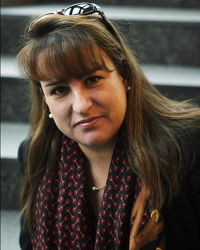
Patricia Quijano Dark, editor, Okespanol
Photo: Thatcher + Co.
A podcast interview with Patricia Quijano Dark, editor, Okespanol, is available in the Podcast Section of Hispanic Marketing & Public Relations, HispanicMPR.com. During the podcast, she discusses her publication with Elena del Valle, host of the HispanicMPR.com podcast.
Patricia was raised in New York City and her family hails from Argentina. A graduate of Columbia University she worked at publications in London, England and at El Clarin, the Argentine daily, before moving to Salt Lake City. In Salt Lake City, she worked in journalism as a freelancer and edited translations of Newsweek for the Spanish language edition.
Prior to working at OKespañol she was executive director of the Utah Hispanic Chamber of Commerce. She has served on several boards of local non-profits and is one of the co-founders of the Dual immersion Academy, a dual immersion school in Utah. She is highlighted in volume I of the book Utah Latinos and was named one of 30 Women to Watch by Utah Business magazine.
To listen to the interview, scroll down until you see “Podcast” on the right hand side, then select “HMPR Patricia Quijano Dark” click on the play button below or download the MP3 file to your iPod or MP3 player to listen on the go, in your car or at home. To download it, click on the arrow of the recording you wish to copy and save it to disk. The podcast will remain listed in the April 2012 section of the podcast archive.
Posted by Elena del Valle on April 13, 2012
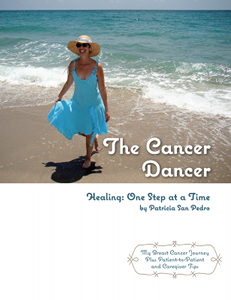
The Cancer Dancer book cover
Photos: San Pedro Productions
“You have breast cancer.” Those dreaded words are heard by many women in the United States and world wide. Among them was Patricia San Pedro, a Miami publicist. With the help of friends and loved ones she kept track of her four year journey of treatment and recovery. She shared photos, her findings and 400 patient-to-patient tips in The Cancer Dancer Healing: One Step at a Time ($14.99), a 148-page softcover book self published in 2011. The book was among the items in this year’s 54th Annual Grammy Awards Gift Bag.
“From the moment I was diagnosed, I felt a need to document my healing journey. My hope and goal was to share as much information as I could, in order to ease the journey for others who would follow. My book include more than 400 patient to patient tips that I gathered in the midst of my journey. My hope is also to inspire others to see the blessings and accept the gifts that come from every situation in our lives…even the difficult ones,” said San Pedro by email when asked why she wrote the book.
She set up English, PositivelyPat.com, and Spanish language, PatriciaPositiva.com, websites and found volunteer translators to assist her in spreading the message to speakers of other languages. Not content with just publishing a book the positive thinker approached the Discovery Channel to share her video journal and message with a television audience. The 60-minute documentary, produced by Discovery Channel, Imagina U.S. and the author, aired on Discovery Familia in the United States and Discovery Home and Health in Latin America October 2011.
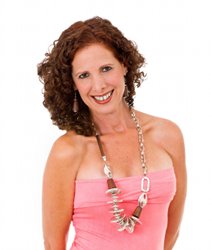
Patricia San Pedro, author, The Cancer Dancer in 2010
“I am on unofficial nonprofit. Everything I’m doing is a public service, but I haven’t formed an official non profit yet. I’m actually hoping to raise funds so I can keep doing more of this. It’s not easy to fund it all yourself. I’ve done lots with volunteers. Right now I need sponsors to be able to distribute the book for free to patients. And to print the Spanish and Portuguese versions, which are only in ebook format at the moment. I receive requests every single day asking for the book in a variety of languages,” said San Pedro when asked about funding for her projects.
San Pedro, a three-time Emmy Award winner, is owner of San Pedro Productions. She is also a photographer and contributing author of Dish & Tell: Life, Love and Secrets written with five other women.

Click to buy The Cancer Dancer
Comments:
Filed Under: Books
Posted by Elena del Valle on April 11, 2012

Piratas, a new series airing on Vme – click to enlarge
Photos: Vme
There is good news for Spanish speaking United States audiences left hungering for more pirate fun after the last of the Pirates of the Caribbean movies. In 2010, Telecinco of Spain produced a pirates series set in the eighteenth century. Thanks to Vme Spanish speakers in the United States will have an opportunity to see 10 60-minute episodes beginning April 19 at 10 p.m.(ET/PT).

The cast of Piratas – click to enlarge
Piratas (Spanish for pirates), filmed in coastal Spain with a budget exceeding $1 million per episode, showcases the adventures of an “unabashed and philandering member of the nobility” forced to infiltrate the pirate crew of the legendary Captain Bocanegra.
Described as light-hearted and peppered with humor in promotional materials, the series follows Álvaro Mondego, a privileged member of the noble class as he is captured by Captain Bocanegra pirates, along with Carmen, his daughter, and crew. The programs are said to be filled with gorgeous ships, stinking dungeons, brave rescues, fierce battles and a daring race for riches.
Vme, a 24-hour Spanish language network partnered with public television stations, is available in 10 million homes possibly reaching as much as 80 percent of the Spanish language market.
Posted by Elena del Valle on April 9, 2012

Click to enlarge
Photos: MamásLatinas
Hoping to expand the reach of CafeMom, founded in late 2006 by Andrew Shue and Michael Sanchez with the support of lead investors Highland Capital Partners and Draper Fisher Jurvetson, earlier this year the company launched MamásLatinas targeting the Hispanic mom market.
Company executives are convinced that MamásLatinas fills a major gap in the mainstream digital and social environment. Before launching the new venue CafeMom staff conducted a major national study. According to a spokesperson, the study revealed that 92 percent of Hispanic moms across the acculturation spectrum believed there was no website that clearly met their needs. Anticipating that by 2014 one in four moms online will be of Hispanic heritage they moved forward.
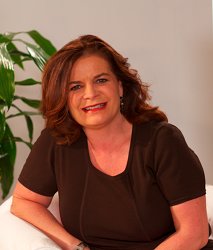
Lucía Ballas-Traynor, co-founder and executive vice president, MamásLatinas
“With the right Hispanic leadership and Hispanic lens, in the trails of the Census 2010 disclosing of Hispanic population exponential growth, launching a Latina-centric brand seemed like a win-win solution, both from a business and consumer standpoint,” said Lucía Ballas-Traynor, co-founder and executive vice president, MamásLatinas, by email.
“MamásLatinas goal is to super serve Hispanic moms across the total spectrum –languages spoken, nativity and country of origin, age, or geographic location. Our site is the first online bilingual destination for Latina moms with two core offerings, an online community and a content platform called ¿Qué Más?. The online community consists of broad-appealing groups, where conversations cover a wide array of topics (Bienvenidas, LaPlaza); and groups that specifically target moms by country of origin (Mamás Mexicanas, etc.), or by the age of their kids; or even by passion touch points (Beauty, Puro Español).”
MamásLatinas relies on 10 full-time staff writers and editors as well as freelance writers, bloggers and columnists who write 35 original English and Spanish articles a day for ¿Qué Más?, according to Ballas-Traynor who indicated that the channel provides a venue for Latina moms to find opinion pieces about topics of interest to them and what people are talking about including news and culture, fashion/beauty, food, and parenting from their cultural perspective and sensibility, in English or Spanish, or both. Twenty-one writers including two mean are listed on the site as of this writing.
To spread the word the company plans to promote the site on Google and Facebook. Additional marketing efforts being implemented include offline media partnerships, public relations and paid marketing strategies.
“We are poised to become one of the leading online destinations dedicated to Latinas by the end of the year and the leader among Latina moms. We are aggressively marketing the site and encouraging our members to tell their friends. Our number one goal for this year is to push brand awareness and new members. We know there is tremendous opportunity for growth, but we don’t yet have a firm projection for the first year,” said Ballas-Traynor.
CafeMom employs 140 people and MamásLatinas shares many of the CafeMom resources especially those in areas of Product (technology, developers and design), Research, Marketing, PR and Sales and Sales Operations.
The new New York based site has the following founding sponsors: Chevrolet, General Mills, K-Mart and Sears. CafeMom boasts a reach of 20 million at CafeMom.com, MamásLatinas, CafeMom Studios, and the CafeMom Plus Network.
Comments:
Filed Under: Media



























